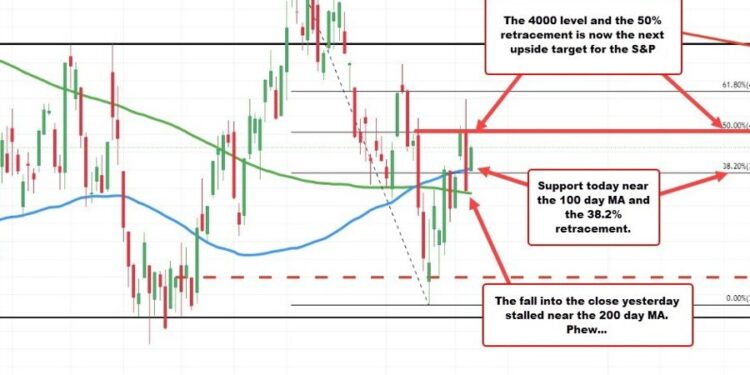The Cobalt Market Rebounds: Assessing Congo's New Export Quota System

Table of Contents
Congo's New Export Quota System: A Detailed Overview
The DRC's new export quota system for cobalt aims to increase government revenue, improve traceability within the cobalt supply chain, and ultimately foster more sustainable mining practices. The system operates by allocating specific export quotas to mining companies, based on a complex set of criteria. This represents a significant shift from previous, less regulated systems.
- Quota allocation process and criteria: The allocation process considers factors such as production capacity, environmental compliance, and adherence to social and labor standards. Companies must meet stringent requirements to qualify for a quota.
- Transparency measures implemented: The government has committed to increased transparency through the publication of quota allocations and regular updates on export volumes. However, the actual level of transparency remains a subject of ongoing debate.
- Impact on small-scale miners: The new system poses significant challenges for small-scale miners (ASM), who often lack the resources and formal structures to comply with the new regulations. Their access to the formal market is greatly affected.
- Potential for corruption and loopholes: As with any system involving quota allocation, there is a potential for corruption and exploitation. Loopholes in the system could allow some companies to circumvent regulations and benefit unfairly.
- Comparison to previous systems: The new system represents a move towards a more formalized and regulated approach compared to previous, less transparent and often chaotic systems. This shift could ultimately lead to greater market stability, but the effectiveness of enforcement is crucial.
Impact on the Global Cobalt Market
The Congo's new export quota system has had a noticeable impact on the global cobalt market. The exact effects are complex and evolving, but several key trends are evident.
- Short-term and long-term price predictions: In the short term, the quota system has the potential to create price volatility due to supply uncertainty. Long-term price predictions are difficult to make but depend on several factors, including the success of the quota system's implementation and global demand.
- Impact on battery manufacturers and electric vehicle production: Fluctuations in cobalt prices directly affect the cost of producing electric vehicle batteries. The quota system thus adds another layer of complexity to the already challenging task of securing a stable supply of this crucial mineral.
- Supply chain adjustments and diversification efforts: Battery manufacturers and other downstream industries are increasingly seeking to diversify their cobalt supply chains to mitigate risks associated with reliance on a single source.
- Potential for price speculation and market manipulation: The quota system, if not effectively managed, could create opportunities for price speculation and market manipulation. This risk needs to be carefully monitored.
- Competition from other cobalt-producing nations: Countries like Australia, Canada, and Madagascar are increasing their cobalt production, potentially reducing the DRC's dominance in the global market and offering alternative supply sources.
Responsible Sourcing and Environmental Concerns
The DRC's new export quota system is designed, at least in part, to promote responsible cobalt mining and reduce environmental damage. However, the effectiveness of these efforts remains to be seen.
- Improved traceability and due diligence efforts: The quota system aims to increase traceability by requiring more rigorous documentation of cobalt's journey from mine to market.
- Reduction of artisanal and small-scale mining (ASM) risks: While aiming to regulate ASM, the new system's impact on reducing risks remains a point of concern, especially regarding worker safety and environmental damage.
- Environmental regulations and enforcement: Stringent environmental regulations are crucial for mitigating the environmental impact of cobalt mining. Effective enforcement of these regulations is equally vital.
- Social and labor standards: The quota system aims to improve social and labor standards within the cobalt mining industry, promoting fair wages, safe working conditions, and the elimination of child labor.
- International collaborations and certifications: International collaborations and certifications, such as those offered by the OECD, play a vital role in ensuring responsible sourcing and promoting transparency.
The Role of Artisanal and Small-Scale Mining (ASM)
Artisanal and small-scale mining (ASM) represents a significant portion of cobalt production in the DRC. The new export quota system presents both opportunities and challenges for this sector.
- Access to the formal market for ASM miners: The system aims to integrate ASM miners into the formal economy, but the practical challenges of doing so are substantial.
- Support programs and training initiatives: Government support programs and training initiatives are essential to help ASM miners meet the requirements of the new system.
- Challenges in regulating ASM activities: Regulating ASM activities is inherently difficult due to the decentralized and informal nature of these operations.
- Human rights concerns and child labor: Addressing human rights concerns and child labor within the ASM sector remains a critical priority.
Conclusion
The implementation of Congo's new export quota system presents a complex scenario for the cobalt market. While aiming to improve government revenue and promote responsible sourcing, its success hinges on effective implementation, transparency, and collaborative efforts across the supply chain. The impact on global cobalt prices, the ASM sector, and environmental sustainability remains to be seen, requiring ongoing monitoring and analysis. The interplay between the Cobalt Market and DRC Mining will continue to shape the future of this crucial mineral.
To stay informed on the evolving dynamics of the cobalt market and Congo's export quota system, continue to follow our updates and analyses. Understanding the complexities of the Cobalt Market and its dependence on the DRC is critical for navigating the future of this essential mineral. Subscribe to our newsletter for in-depth reports on the DRC Mining industry and its impact on the global Cobalt Market.

Featured Posts
-
 Verbetering Van De Aanpak Van Grensoverschrijdend Gedrag Binnen De Npo
May 15, 2025
Verbetering Van De Aanpak Van Grensoverschrijdend Gedrag Binnen De Npo
May 15, 2025 -
 Post Export Ban How Congos Cobalt Quota Plan Will Shape The Market
May 15, 2025
Post Export Ban How Congos Cobalt Quota Plan Will Shape The Market
May 15, 2025 -
 Kuzey Kibris Gastronomisi Itb Berlin De Bueyuek Basari Kazandi
May 15, 2025
Kuzey Kibris Gastronomisi Itb Berlin De Bueyuek Basari Kazandi
May 15, 2025 -
 The Hollywood Strike What It Means For The Film Industry And Its Workers
May 15, 2025
The Hollywood Strike What It Means For The Film Industry And Its Workers
May 15, 2025 -
 Significant Job Cuts At Microsoft 6 000 Positions Eliminated
May 15, 2025
Significant Job Cuts At Microsoft 6 000 Positions Eliminated
May 15, 2025
Latest Posts
-
 Michael Chandler And Paddy Pimblett Joint Ufc 314 Predictions
May 15, 2025
Michael Chandler And Paddy Pimblett Joint Ufc 314 Predictions
May 15, 2025 -
 Ufc 314 Chandler Predicts Pimblett Will Struggle With His Pace
May 15, 2025
Ufc 314 Chandler Predicts Pimblett Will Struggle With His Pace
May 15, 2025 -
 Chandler Doubts Pimblett Can Handle His Aggressive Style At Ufc 314
May 15, 2025
Chandler Doubts Pimblett Can Handle His Aggressive Style At Ufc 314
May 15, 2025 -
 From Write Off To Title Contender Paddy Pimbletts Ufc Journey
May 15, 2025
From Write Off To Title Contender Paddy Pimbletts Ufc Journey
May 15, 2025 -
 San Diego Padres Secure 10th Win Early Season Lead Over Athletics
May 15, 2025
San Diego Padres Secure 10th Win Early Season Lead Over Athletics
May 15, 2025
